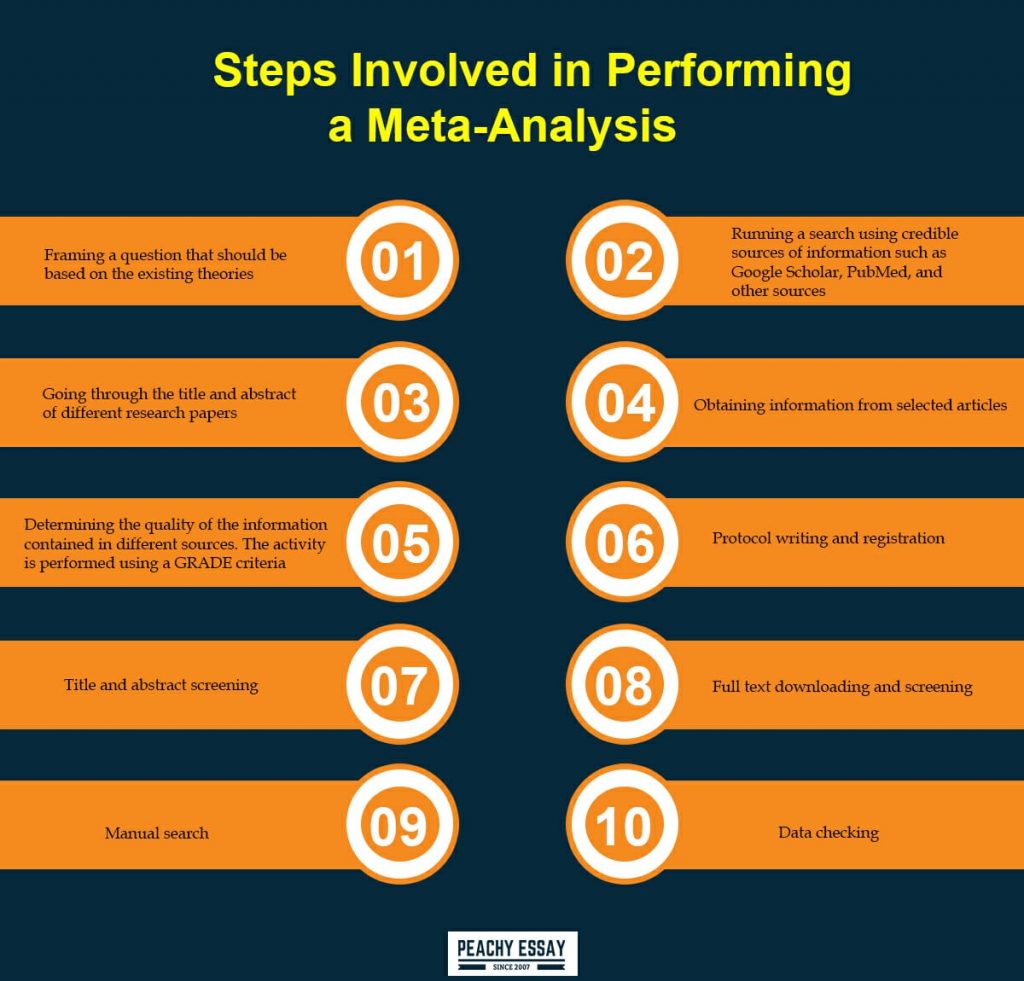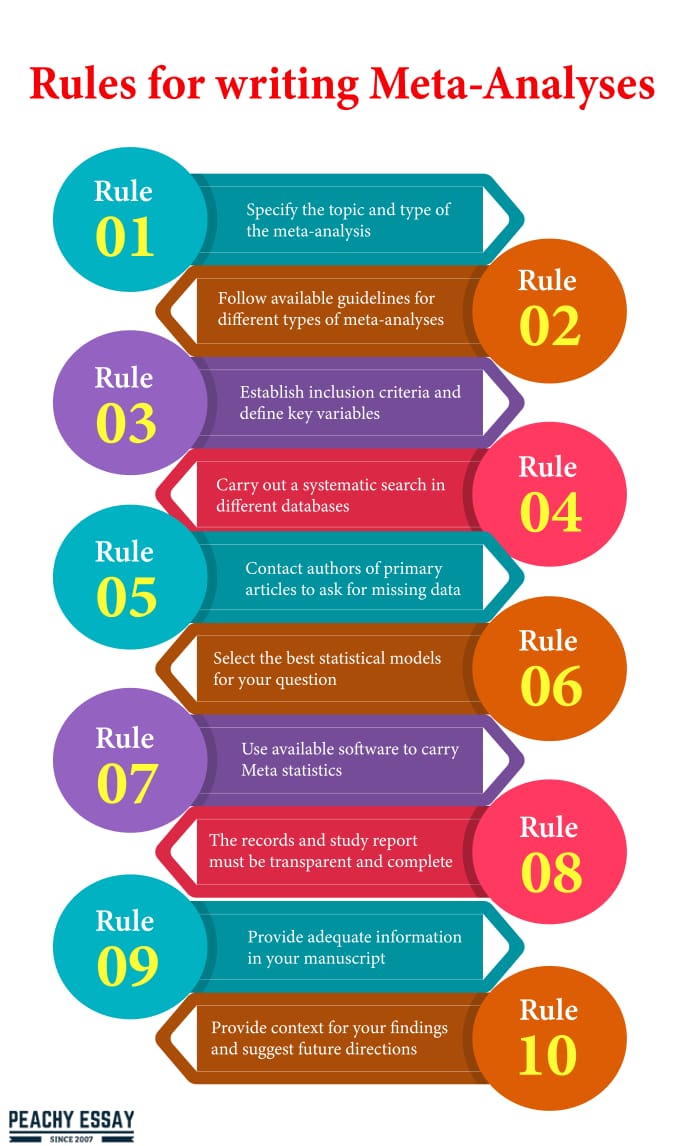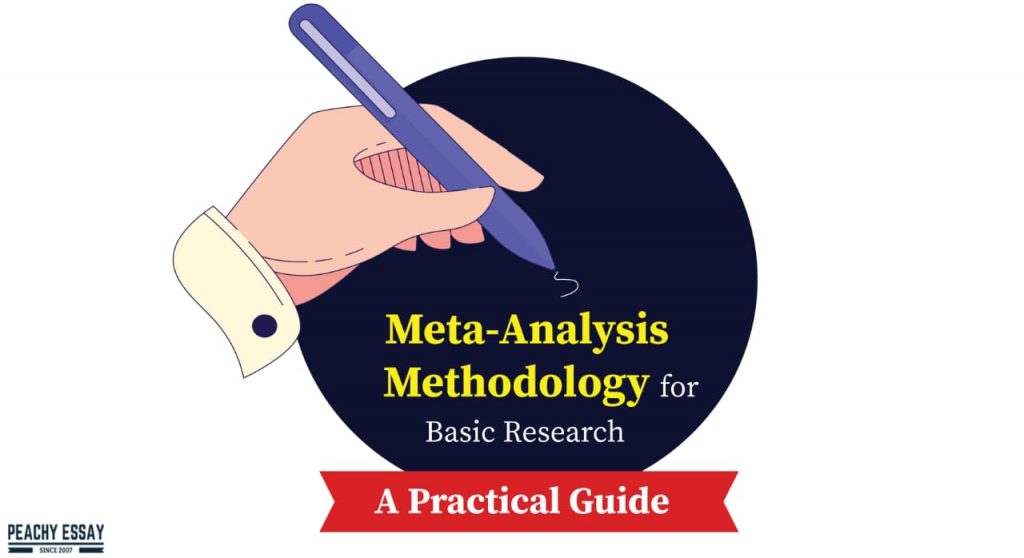A meta-analysis is one of the most known statistical analyses that combine the results of different scientific studies. It is important to note that a meta-analysis may be performed when additional scientific research addresses a similar question. Therefore, various studies are expected to provide results or report measurements that have some degree of errors. There has been a significant increase in the number of studies published in the biomedical literature, and more so in health and tropical medicine. The increase in the amount of available literature has made clinical medicine to become more complicated. Therefore, knowledge and skills from other sources of information are often required to make a particular clinical decision. Most available studies are heterogeneous when it comes to the subject, operational quality, and design, and therefore, various studies may handle the research questions differently, which, in turn, adds to the complexity of the conclusions and synthesis of evidence.
It is essential to note that various evidence-based medical practices aim to consolidate the most influential research evidence regarding patient and clinical expertise. Meta-analysis and systematic reviews have made significant contributions to the field of medicine. They both play an essential role in synthesizing the evidence and information required in making clinical policies and decisions. The systematic reviews help summarize the available literature using different parameters, followed by logical synthesis and a critical appraisal from different primary studies. Based on the most straightforward definition, a meta-analysis entails the statistical analysis of information that has been obtained from independent primary research that focuses on a similar question. It is important to note that meta-analysis and systematic reviews play a significant role in clinical research and evidence-based practices. When it comes to basic science, meta-analysis aims to evaluate past literature sources using a quantitative and rigorous technique that is prevalent and rare. The research process also utilizes various forms of manuscripts, whose main objective is providing a brief theoretical basis, workflow outline, and computational resources that will aid in performing a systematic review that is followed by primary research studies.
Researchers should never forget that the process of Meta-analysis is very challenging, and it may require an individual to have a statistical understanding and relevant skills for performing the entire research activities. There are different guides available to show how meta-analysis can be completed in clinical research. Various software packages are used to perform a clinical meta-analysis, and they include MetaFOR library for R, JASP, Comprehensive Meta-Analysis Software, Revman, and the Excel plugins MetaXL.
Steps to Meta-Analyses
The following are steps involved in performing a meta-analysis:

- Framing a question that should be based on the existing theories
When preparing various answerable questions in a meta-analysis, there is the use of the PICO (Participant-Intervention-Comparator-Outcomes) framework; there is the use of populations or relevant individuals to the research being conducted. For instance, if the researchers are interested in assessing the effectiveness of a particular drug such as bronchoconstriction and nedocromil, which are used for narrowing the passage of air in asthmatic patients, the participants in the research will be comprised of adult asthmatic patients and not children. On the other hand, if the researchers are interested in studying the effectiveness of mindfulness in meditation among adults suffering from anxiety problems, the subject of interest will also comprise adults and not children.
- Running a search using credible sources of information such as Google Scholar, PubMed, and other sources.
After an individual decides on the (Participant-Intervention-Comparator-Outcomes), the researcher will need to search the literature databases, which will thereafter assist them in identifying the most appropriate terms to be used doing research. The different search terms are often arranged using logic, fuzzy, Boolean logic, and specific search-related vocabulary, expansion, truncation, and symbols in various sections of the reported research.
- Going through the title and abstract of different research papers
As a researcher, you will first need to go through the title and the abstract section for the various research papers you come across. It is essential that you also create a scheme that will assist you in deciding on the different articles that you will choose and reject when performing your meta-analysis. For instance, as a researcher, you may come up with a scheme where you may write things such as;
- The research paper is irrelevant for the study topic
- The research article has a relevant population
- The research article has or does not have a relevant exposure and intervention
- The research article has a relevant group for comparison.
- The article discusses the outcome that relates to the outcome of another research paper.
- The research paper is published using a foreign language, which cannot be translated.
- The article is not published in a standard format, and therefore, it is not suitable for review
- Obtaining information from selected articles
Once you have finished going through the abstracts and titles of the different research papers, the next thing you should do is obtaining information from these sources. You must always strive to obtain the following information whenever you perform an analysis on different research articles.
- The author’s name
- The year the article was published
- The population in which the research was undertaken
- The type of research that was undertaken: whether it is in an RCT or was observational.
- The exact intervention that was utilized in the research article
- What was the outcome, and how was it measured?
- The number of individuals that were included in the intervention
- The number of people included in the control arm
- Determining the quality of the information contained in different sources. The activity is performed using a GRADE criteria
For all the studies that you undertake, you will be required to appraise all the information in them and decide whether the task you are considering for your review adheres to all the internal validity criteria. You will be required to undertake and identify the following:
- What the hypothesis or theories in the research are all about
- Whether the sample size is adequate for the research question or it is underpowered.
- To what extent bias was eliminated in the study and whether there were any blinding
- How confident the researcher is regarding the different processes included in prognosis.
- If this was an observational study, how the authors eliminated the risks involved in selection bias?
- Was there a confounding variable that was accounted for?
- Protocol writing and registration
The process of protocol registration occurs during the early stages, and they aid in guaranteeing transparency in the entire research process hence protecting the research findings from duplication problems. In addition, this step is regarded as one of the proofs for the team’s action plans, eligibility criteria, quality assessment, intervention or exposure, and research question. Therefore, it is recommended that during this step, the researcher should send the different research findings to the principal investigator (PI) to revise them, then upload them to registry sites.
- Title and abstract screening
It is essential always to note that the decisions used in selecting and retrieving articles that would be used for further research should be centred on eligibility criteria that will minimize the chances of including non-relevant articles.
- Full text downloading and screening
The majority of the search engines provide links that researchers can use to access full-text articles for free. If you have difficulty accessing information, you could still utilize various research websites such as ResearchGate that will offer an individual the options for requesting full access from the authors
- Manual search
It is important to note that an individual has to exhaust all the chances of bias in their research work by undertaking explicit hand-searching to retrieve reports that may have been dropped from the first search.
- Data checking
Because of the expected human bias and errors, it is recommended that individuals do not skip the data checking step. Researchers are advised to assign articles to 2–3 independent reviewers, who should be different from those who performed the articles’ extraction. In situations where there is a limitation in the number of resources, each reviewer should be assigned a different paper from the one they extracted.
Differences Between a Meta-Analysis and a Systematic Review
There is a significant difference between a systematic review and meta-analysis. A systematic review is a high-quality synopsis of primary research regarding a specific research question that analytically identifies, chooses, examines, and produces high-quality research evidence that is relevant to the questions being answered. In other words, it is correct to state that a systematic review provides a detailed summary of other scholarly literature that relates to a specific question or research topic. In most cases, a systematic review is written by experts after they have reviewed all the information contained in the published and unpublished research articles. The broad nature of a systematic review differentiates it from other traditional literature reviews that classically scrutinize a smaller set of research evidence and present it based on a single author’s perspective.
A meta-analysis, on the other hand, represents a focussed subset of a systematic review. However, it is essential to note that meta-analysis is not included in all systematic reviews. Simply put, a systematic review refers to the entire process of selecting, evaluating, and synthesizing all available evidence. In contrast, the term meta-analysis entails the statistical method of combining the data retrieved from a systematic review. It is important to note that the conclusions produced using a meta-analysis are more potent when compared with the analysis from a single study. This is because of the increased number of accumulated effects and results, increased diversity among individual participants, and increased subjects. Notably, meta-analyses have become typical in the biomedical and social sciences. The opponents of meta-analysis argue that combining information from disparate studies leads to unreliable and misleading results.
One of the key characteristics of a systematic review is that they clearly state the primary aim of the research paper, and they have a predefined eligibility criterion. Systematic reviews also utilize a reproducible and explicit methodology that meets the eligibility criteria of the findings contained in the study. Also, systematic methods aim to minimize bias and provide more reliable results from which conclusions can be drawn and decisions made compared with the traditional review approaches. On the other hand, meta-analyses are conducted to evaluate the strength of a particular research topic. One objective is determining whether an effect exists. The second objective is determining whether the effect is negative or positive and obtaining a summary of the estimate of the effect. A meta-analysis can improve the precision of evaluations of impact, respond to the questions posed by the individual studies, generate new hypotheses, and settle arguments arising from conflicting research findings.
Simple Rules for Carrying Out and Writing Meta-Analyses
A meta-analysis is a powerful tool used in accumulating and summarizing information and knowledge obtained by doing research. Due to the significant increase in published literature, there has been considerable growth in meta-analyses on different topics. Evidence shows that meta-analysis is one of the publications that has received many citations in biomedical science. The following are some rules that could be used by researchers in carrying out and writing meta-analyses.

Limitations on Meta-Analysis
It is essential to note that publications containing meta-analysis have many limitations, which researchers should know and appreciate. The summary provided in a meta-analysis is as reliable as the methods used in estimating the effect in the different primary sources. In other words, undertaking a meta-analysis is not one way to overcome the challenges present in executing and designing preliminary studies. Also, it does not correct biases resulting from selective publication where different studies reported dramatic effects.
Different controversies may also arise in the interpretation of summarized results, especially when the results of a particular study are pooled in the meta-analysis. The entire review process inevitably identifies the type of patients studied, the interventions utilized, and methodologic quality. On the same note, it is essential to remember that there is some form of subjectivity when it comes to deciding the number of studies that must be present before pooling is applicable.
Applications of Meta-analysis
A meta-analysis would fit in the following research process
Publications
Most journals encourage scholars to write meta-analyses and systematic reviews that recapitulate literature on a specific topic.
Planning new studies
Meta-analyses play a significant role in planning for new studies. They also aid in identifying the questions that have already been answered as well as those that are yet to be answered. They also aid in guiding the populations or outcome measures that are more likely to produce effective results.
Grant applications
Meta-analyses are utilized in grant applications to validate the need for new research on various topics.
Concluding Remarks
A meta-analysis is a statistical technique used to combine information obtained from different studies regarding a specific topic. It is important to note that the statistical method plays a significant role in research involving healthcare. Possible, an individual might be asking themselves the importance of carrying out a meta-analysis. The reason is to make a correct and precise decision regarding a particular intervention since researchers are not advised to rely on the results that have been obtained from a single study. Information should be obtained from different studies because the results may vary from one task to another for various reasons, such as confounding factors and the study samples utilized. The following are some of the basic steps on how meta-analysis is performed: identifying or diagnosing the problem, conducting a literature search, deciding the inclusion or selection criteria, data extraction, and finally, completing the primary meta-analysis. There is a significant number of differences between a systematic review and a meta-analysis. Among those differences is that a systematic review tries to collect all existing empirical research by using clearly defined and systematic methods to obtain answers to a specific question. On the other hand, a meta-analysis entails a statistical process of combining and analyzing results from many similar studies.




